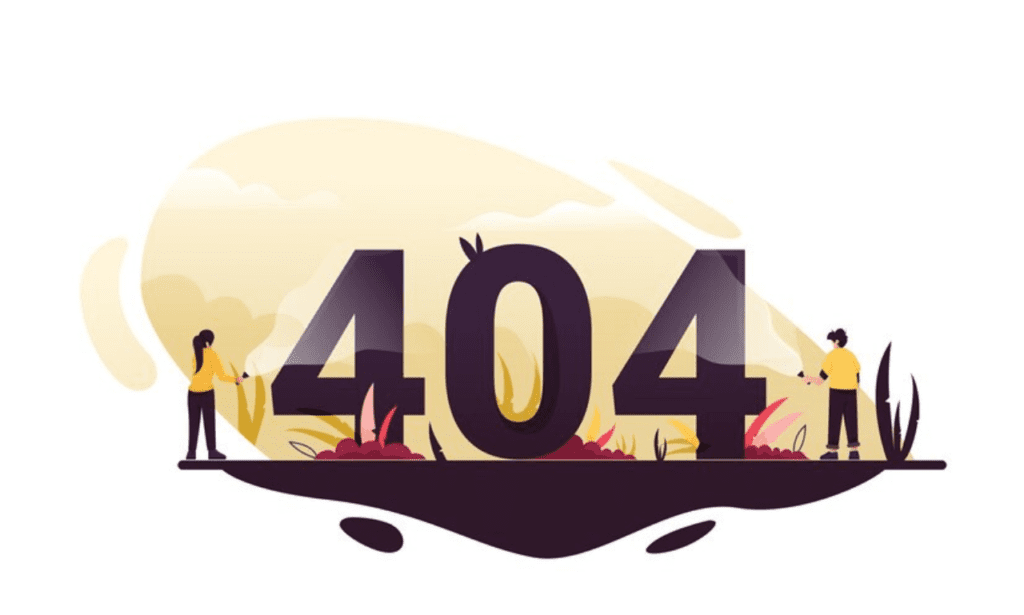In the digital world, few things are as frustrating for users or as potentially damaging for website owners as the dreaded 404 error. These pesky errors can be a significant roadblock to your small business’s online success, especially when it comes to SEO. But fear not—understanding and managing 404 errors can be straightforward with the right approach. This comprehensive guide will walk you through everything you need to know about 404 errors, their impact on SEO, and how to handle them effectively.
In a recent Google Office Hours podcast, Gary Illyes addressed a common concern among website owners regarding 404 Page Not-found errors. He explained the potential impact these errors can have on search rankings, reassuring listeners that while 404 errors are not ideal, they do not necessarily harm a site’s overall performance if properly managed. He also provided tips on how to handle these errors effectively to maintain a healthy website.
Table of Contents
Understanding 404 Errors
What Are 404 Errors?
A 404 error occurs when a user tries to access a webpage that doesn’t exist. This could be due to the page being deleted, the URL being mistyped, or the content being moved without a proper redirect. When this happens, users are greeted with a “404 Not Found” message, signaling the dead end in their browsing experience.
Summary
How Common Are 404 Errors?
404 errors are a common occurrence on the internet. Even the most meticulously maintained websites can have them. These errors can crop up from various sources, such as broken links, deleted pages, or user typos. While encountering the occasional 404 error is almost inevitable, the key is managing them effectively to minimize their impact.
Ready to get started? Take your business to the next level with The Ocean Marketing.
Achieving online growth is easy with The Ocean Marketing. Take the first step today.
The SEO Impact of 404 Errors Separating Myth from Fact
The Misconception about 404 Errors and SEO
One of the biggest myths in the world of SEO is that a few 404 errors will automatically lead to significant ranking drops. This misconception often causes unnecessary panic among website owners. In reality, search engines like Google understand that 404 errors happen and don’t penalize websites harshly for a few occurrences.
Google's Perspective on 404 Errors and SEO
Google’s Search Quality Analyst, Gary Illyes, has commented on this topic, emphasizing that not all 404 errors will hurt your site’s SEO. Google focuses on the overall health and quality of your website. Occasional 404 errors are considered normal, and as long as your site provides value and maintains good user experience, your rankings should remain unaffected.
The Overall Health of Your Website
The key takeaway is that Google looks at the bigger picture. A well-maintained website with high-quality content and good user experience can weather the storm of occasional 404 errors. However, frequent and unresolved 404 errors can signal neglect and harm your site’s reputation and SEO.

When 404 Errors Become a Problem
The User Experience Factor
While a few 404 errors won’t tank your SEO, they can significantly impact user experience. Frequent encounters with 404 errors can frustrate users, leading them to abandon your site. This negative user experience can result in higher bounce rates and lower engagement, both of which can indirectly affect your SEO.
The SEO Impact of User-Generated 404 Errors
A high volume of user-generated 404 errors—those resulting from user actions like mistyped URLs or following broken links—can send negative signals to search engines. When users bounce off your page quickly, it suggests low-quality content or poor site maintenance, which can hurt your SEO over time.
How Does Your Site Score?
Try our real-trial website auditor and see how well your site is performing. It will also provide you with a specific list of actionable improvements that will help your marketing!
Potential Sources of User-Generated 404 Errors
User Typos in URLs
User typos are a common source of 404 errors. When users manually type URLs into the address bar, even a small mistake can lead them to a non-existent page.
Broken Links from External Sources
Another significant source of 404 errors is broken links from external websites. If other sites link to pages on your site that no longer exist or have been moved without a proper redirect, users will encounter 404 errors.
Solutions for User-Generated 404 Errors Keeping Users Happy and Google Satisfied
302 redirects are temporary redirects, indicating that the content has been moved temporarily. While useful in certain scenarios, they are less beneficial for SEO because search engines may not transfer the original page’s SEO value to the new page.
The Concept of Redirects
One of the most effective ways to handle user-generated 404 errors is through redirects. Redirects automatically send users from the missing page to a relevant, existing page on your site, ensuring a seamless browsing experience.
Types of Redirects
301 Redirects
For SEO purposes, 301 redirects are the most common and recommended type. A 301 redirect is a permanent redirect that transfers the majority of the original page’s SEO value to the new page. This ensures that users and search engines both understand that the content has been moved permanently.
302 Redirects
302 redirects are temporary redirects, indicating that the content has been moved temporarily. While useful in certain scenarios, they are less beneficial for SEO because search engines may not transfer the original page’s SEO value to the new page.
Improving User Experience with Redirects
Implementing redirects can significantly improve user experience by preventing them from hitting dead ends. Instead of encountering a 404 error, users are seamlessly redirected to relevant content, keeping them engaged and reducing bounce rates.
The SEO Benefit of Redirects
By maintaining user engagement through redirects, you not only enhance user experience but also benefit your SEO. Keeping users on your site longer and reducing bounce rates are positive signals to search engines, helping to maintain or even improve your rankings.
Summary
Here’s a summary of the key points discussed:
Fake External 404 Errors:
Gary Illyes highlighted the possibility of 404 errors being generated by automated scanners, often used by hackers to exploit vulnerabilities in plugins or themes. Analyzing the IP address and user agent of the bot causing the errors can provide clues to determine if they are originating from malicious sources.
Google’s Response:
When asked about the correlation between a drop in rankings and 404 errors, Gary Illyes emphasized that fake 404s crawled by Googlebot are unlikely to cause a ranking drop. While 404 errors are normal and common on websites, Gary suggested converting traffic from 404 URLs by showing relevant content to users.
Ranking Drops and 404 Errors:
Gary clarified that in most cases, 404 errors do not directly cause a drop in search rankings. However, if users are encountering 404 pages due to misspelled URLs, implementing redirects to the correct URLs can help resolve the issue.
Addressing Vulnerabilities:
Although not explicitly mentioned by Gary, it’s essential to consider the possibility of bots uncovering vulnerabilities, leading to 404 errors. Website owners can use tools like phpMyAdmin to check for unrecognized users in the database or utilize security plugins such as Jetpack Protect, Sucuri, or Wordfence to scan for vulnerabilities in themes or plugins.
Conclusion
While 404 errors are a common occurrence on websites, they are generally not detrimental to search rankings. Website owners should focus on addressing genuine user-generated 404 errors and implementing measures to enhance website security against potential vulnerabilities.
Navigating 404 errors is an essential part of managing your website’s SEO and user experience. By understanding the nature of these errors, their impact, and the best practices for handling them, you can ensure that your small business’s online presence remains strong and effective.
Remember, occasional 404 errors are a normal part of running a website. The key is to manage them proactively, focusing on user-generated errors that affect your visitors and leveraging redirects to maintain a seamless browsing experience.
For more expert advice and professional SEO services, consider reaching out to a digital marketing agency. With the right support, you can optimize your website, improve your SEO, and provide an exceptional experience for your users.
Stay informed for more insights and updates in our upcoming newsletters.
Refer to the below content for – https://www.searchenginejournal.com/google-on-404-errors-and-ranking-drops/514377/

Marcus D began his digital marketing career in 2009, specializing in SEO and online visibility. He has helped over 3,000 websites boost traffic and rankings through SEO, web design, content, and PPC strategies. At The Ocean Marketing, he continues to use his expertise to drive measurable growth for businesses.

